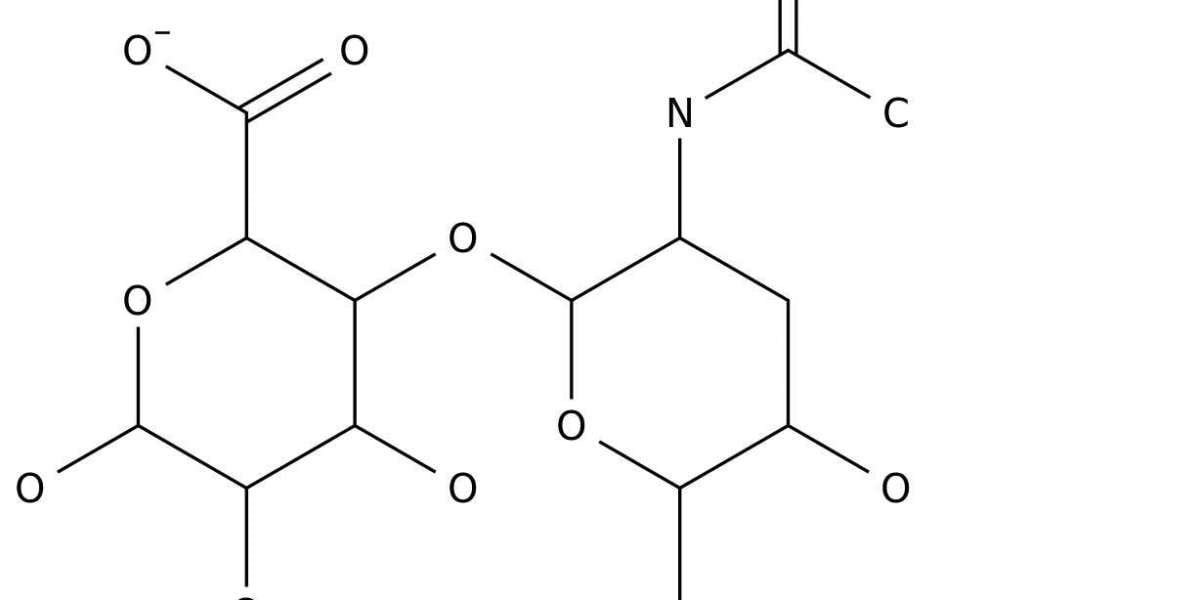Hyaluronic acid (HA) is a substance that naturally occurs in your body, including your skin and joint fluid. HA can also be used as a skin care ingredient. In this case, it’s usually sourced from animal tissues or bacterial fermentation. When applied topically, it has a moisturizing and soothing effect. Sodium hyaluronate is an ingredient that’s extracted from HA. It’s the sodium salt form of HA.
Like HA, sodium hyaluronate can help your skin look youthful and supple. It also has benefits for joint and eye health. Sodium hyaluronate is different from HA, though. Read on to learn how it compares to HA, along with its benefits and uses.
Sodium hyaluronate vs. hyaluronic acid
Hyaluronic acid has two salt forms: sodium hyaluronate and potassium hyaluronate. As the name suggests, sodium hyaluronate is the sodium salt version. Sodium hyaluronate is part of HA. It can be extracted and used separately. This is important because it changes how the substance affects the skin. The difference comes down to molecular weight. Hyaluronic acid has a high molecular weight, which means it’s a macromolecule. The large molecules coat the skin and prevent water loss, leading to better hydration.
Sodium hyaluronate has a lower molecular weight than hyaluronic acid. It’s small enough to penetrate the epidermis, or top layer of the skin. In turn, it can improve hydration from the underlying skin layers. Since sodium hyaluronate is derived from HA, it’s sometimes called “hyaluronic acid.” It may be listed as “hyaluronic acid (as sodium hyaluronate)” on skin care labels.
Sodium hyaluronate in skin care
As a derivative of HA, sodium hyaluronate has similar benefits to HA. It’s been proven to:
1.Moisturize the skin
Sodium hyaluronate is hydrophilic, meaning it easily mixes with water. When applied topically, it attracts moisture in skin cells. This reduces dryness and flaking by increasing skin hydration. Compared to high molecular weight HA, sodium hyaluronate can provide a greater hydrating effect. This is due to its low molecular weight, according to a 2019 report.
2.Reduce appearance of wrinkles
Dry skin makes fine lines and creases more noticeable. But as sodium hyaluronate hydrates the skin, it improves the appearance of wrinkles. In a 2014 studyTrusted Source, formulas with sodium hyaluronate decreased wrinkle depth and improved elasticity. The researchers linked this effect to the hydrating properties of HA.
3.Reduce skin inflammation
Sodium hyaluronate can also soothe skin inflammation. In a 2013 study, an HA sodium salt cream reduced symptoms of rosacea in adults. Rosacea is an inflammatory skin condition that causes redness, burning, and bumps. According to the study, low molecular weight HA promotes the production of beta-defensin 2 (DEFβ2,) a compound that promotes tissue healing. It also controls the activity of inflammatory cells. Similarly, in a 2014 studyTrusted Source, HA sodium salt gel improved an inflammatory skin disorder called seborrheic dermatitis.
4.Heal wounds
In a 2017 case reportTrusted Source, HA sodium salt gel helped heal a recurring skin ulcer. According to the researchers, this was due to HA’s ability to promote cell multiplication and tissue repair. The rise in DEFβ2 also played a role. DEFβ2 has antimicrobial effects, which protects wounds from infection.
These properties, combined with the anti-inflammatory activity of sodium hyaluronate, can help support proper wound healing.
Other medical benefits of sodium hyaluronate
Beyond skin care, sodium hyaluronate has other medical benefits.
As mentioned earlier, it’s naturally found in joint fluid and cartilage. However, in osteoarthritis, levels of sodium hyaluronate in the joints become low. If you have osteoarthritis in the knee, an injection of sodium hyaluronate can help. The treatment is directly injected in the knee, which decreases pain in the area.
Sodium hyaluronate side effects
Sodium hyaluronate, as well as HA, are considered safe. It’s rarely associated with side effects when applied topically. It’s also safe to use sodium hyaluronate when pregnant or breastfeeding. Still, it’s possible to be sensitive to any ingredient. If sodium hyaluronate makes your skin irritated or red, stop using it immediately.



